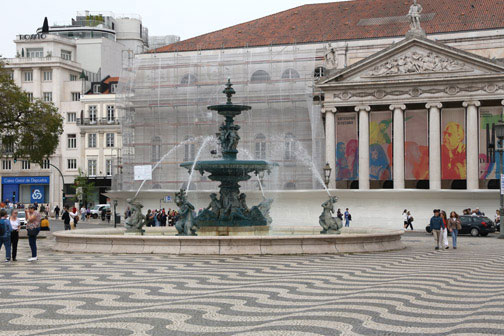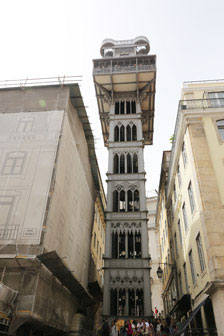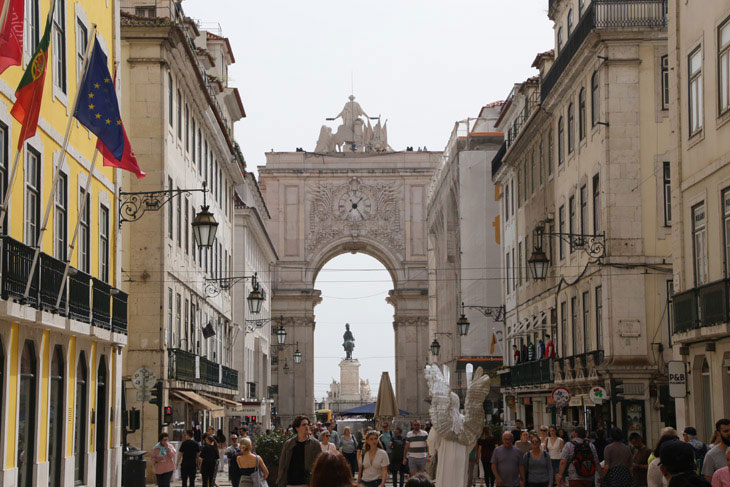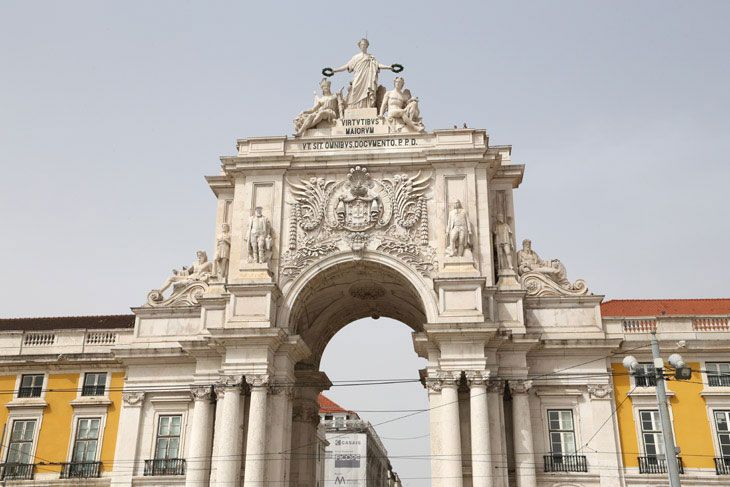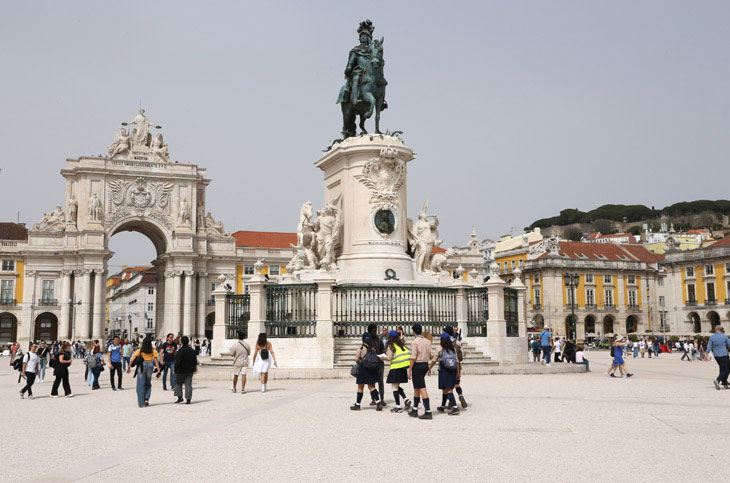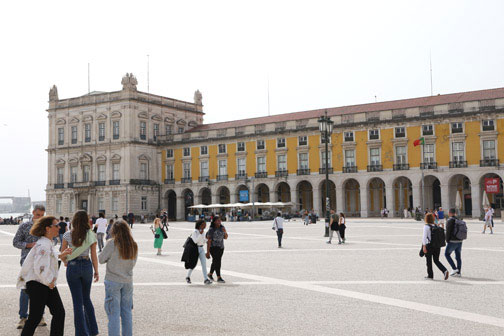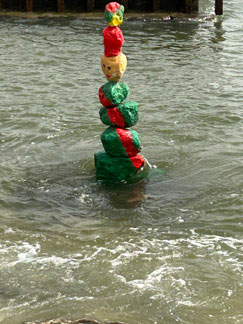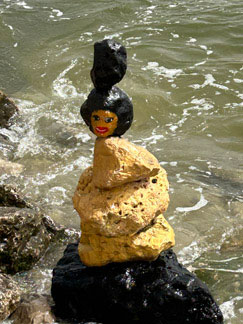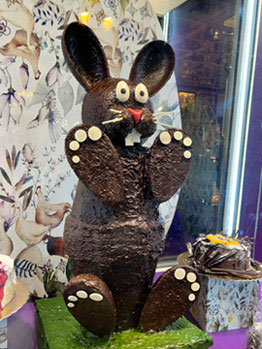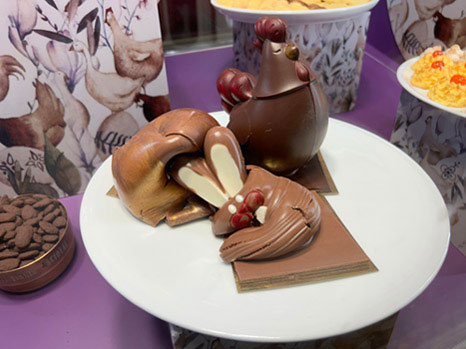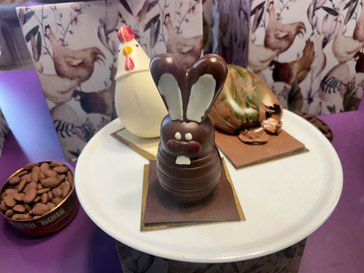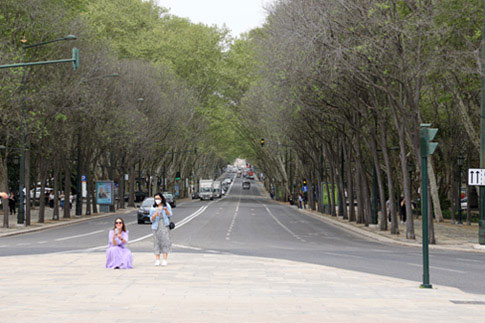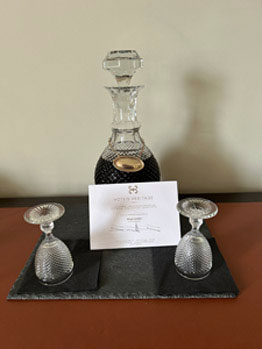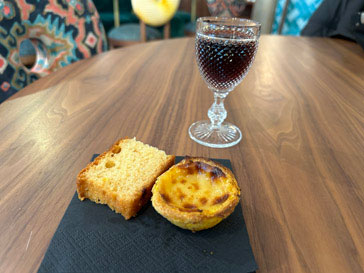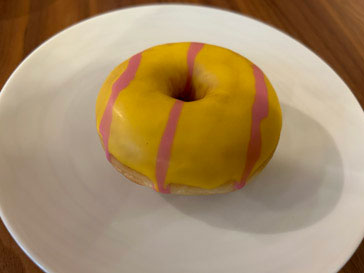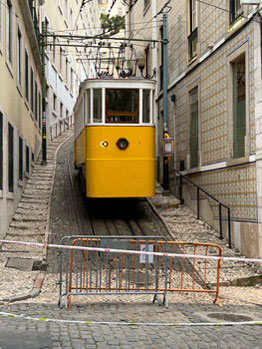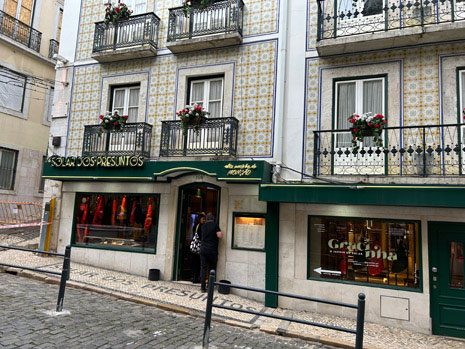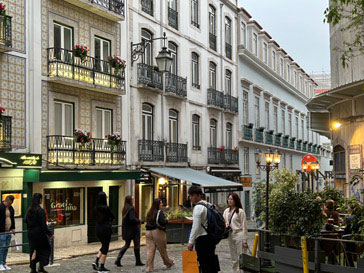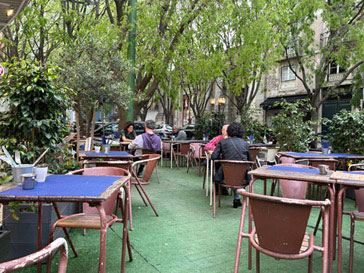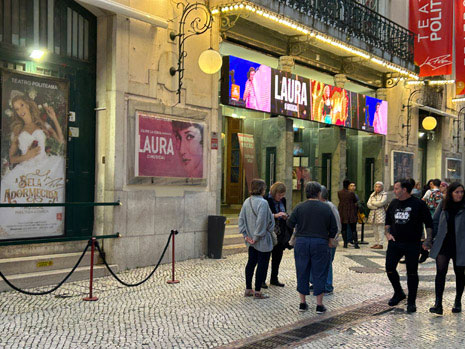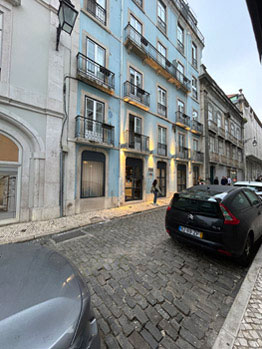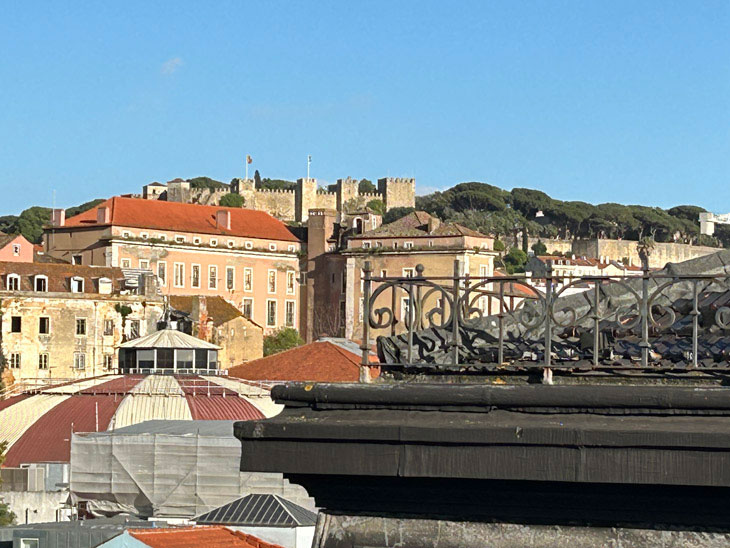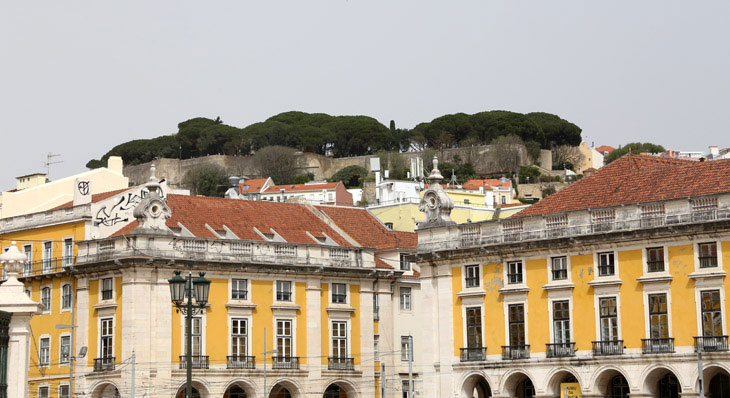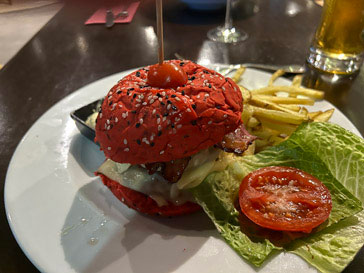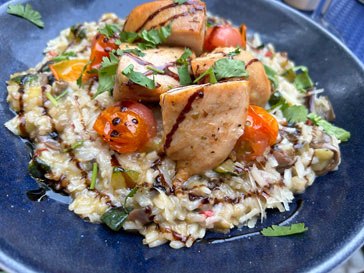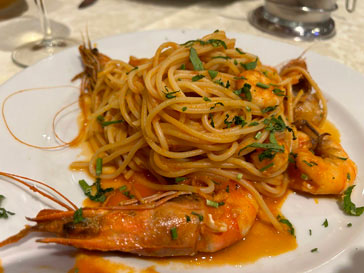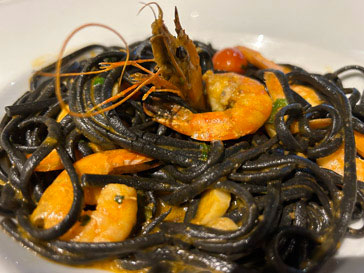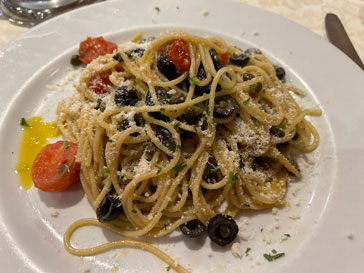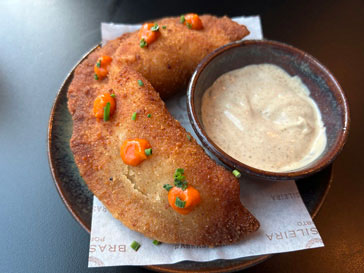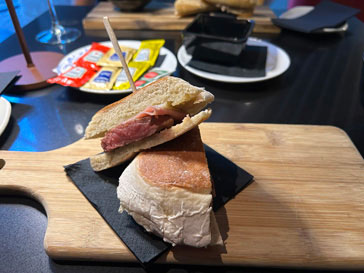Childhood Dreams
Lisbon - Baixa
Lisbon's downtown historical and commercial area where most tourists stay is called Baixa. The orderly layout
of the area is the result of the rebuilding of the city by the Marquis of Pombal after the earthquake, fires,
and tsunami that destroyed the city on All Saints' Day, 1755.
When we first arrived in Lisbon, we stayed in a hotel near the Praça da Figueira. Besides being a traffic
hub for trams, an endless stream of taxis and tuk tuks circled and everytime we passed them, the drivers tried to
entice us into accepting a ride. Sometimes the square was empty, and sometimes there were tents where vendors
sold food and drink and other items.
A larger square, the Praça do Rossio, is only a block or so away. I was impressed by the tile work in front of
the Dona Maria II National Theatre. The paving stones around the fountain always made me feel slightly off-balance.
Lisbon is a city of many hills - some of them quite steep. The Elevador de Santa Justa was built in the 19th century to
transport passengers up 148 feet from the Baixa district to the Largo do Carmo. Today it is a popular tourist attraction.
Streets lined with restaurants and shops lead to Lisbon's main square, the Praça do Comercio.
For hundreds of years before flying was commonplace, this was where visitors to Lisbon arriving by sea disembarked. It
is said to be one of the most beautiful squares in all of Europe.
For some reason, these decorated rocks were piled up at the edge of the Tagus River.
It was almost Easter during our visit. This bakery had an eye-catching window display.
At the end of our trip, we stayed in a very nice hotel slightly North of Rossio Station on the wide tree-lined street
called the Avenida da Liberdade.
I loved that hotel. A cut glass bottle of port welcomed us to our room, but we never drank it because every afternoon
free port and pasteries were set out in the lounge for guests. It was a welcome snack after our daily wanderings.
One of Lisbon's iconic funiculars waited just down the street. During the entire eight days we stayed there, the funicular
never moved, but on the very last night, we finally saw it moving slowly up the steep incline.
These pictures were taken nearby. Almost all the sidewalks we traversed in the city were paved with white stones like these.
They can be quite slippery when it rains.
You can see the Castelo De São George from just about everywhere in Baixa. Here is a view of it from Rossio
Station...
and this was the view of it from our hotel room...
and from the Praça do Comercio.
"How was the food?", people always ask. It was generally satisfactory, but we can't say that Portuguese food is
one of our favorite cuisines. Most restaurants seemed to offer the same things which quickly became monotonous.
Hamburger, cod, and rissotto were always on the menu. Sometimes the hamburgers were a bit strange, but that's
to be expected in foreign countries.
Shrimp dishes invariably came with shrimp heads. I understand that there are people who like to eat them, but
they were often empty so I guess they were only added for decoration.
Hard boiled eggs showed up in unexpected places like tuna sandwiches.
At times, something completely unexpected would be served like the appetizer on the left and the steak sandwich
on the right that was supposed to be made from thinly sliced steak.
So what were my impressions of Portugal? One of the things that struck me first is that there is graffiti everywhere.
I was also amazed that there were so many empty, derelict buildings. In Baixa, men selling sunglasses were always
approaching in an attempt to sell their wares, and it was hard to walk down a street with a lot of restaurants because
someone was always trying to persuade us to come inside.
Nevertheless, we enjoyed the city. The Portuguese people we met were invariably welcoming and friendly, and we always
felt safe in spite of the many warnings about pickpockets.


